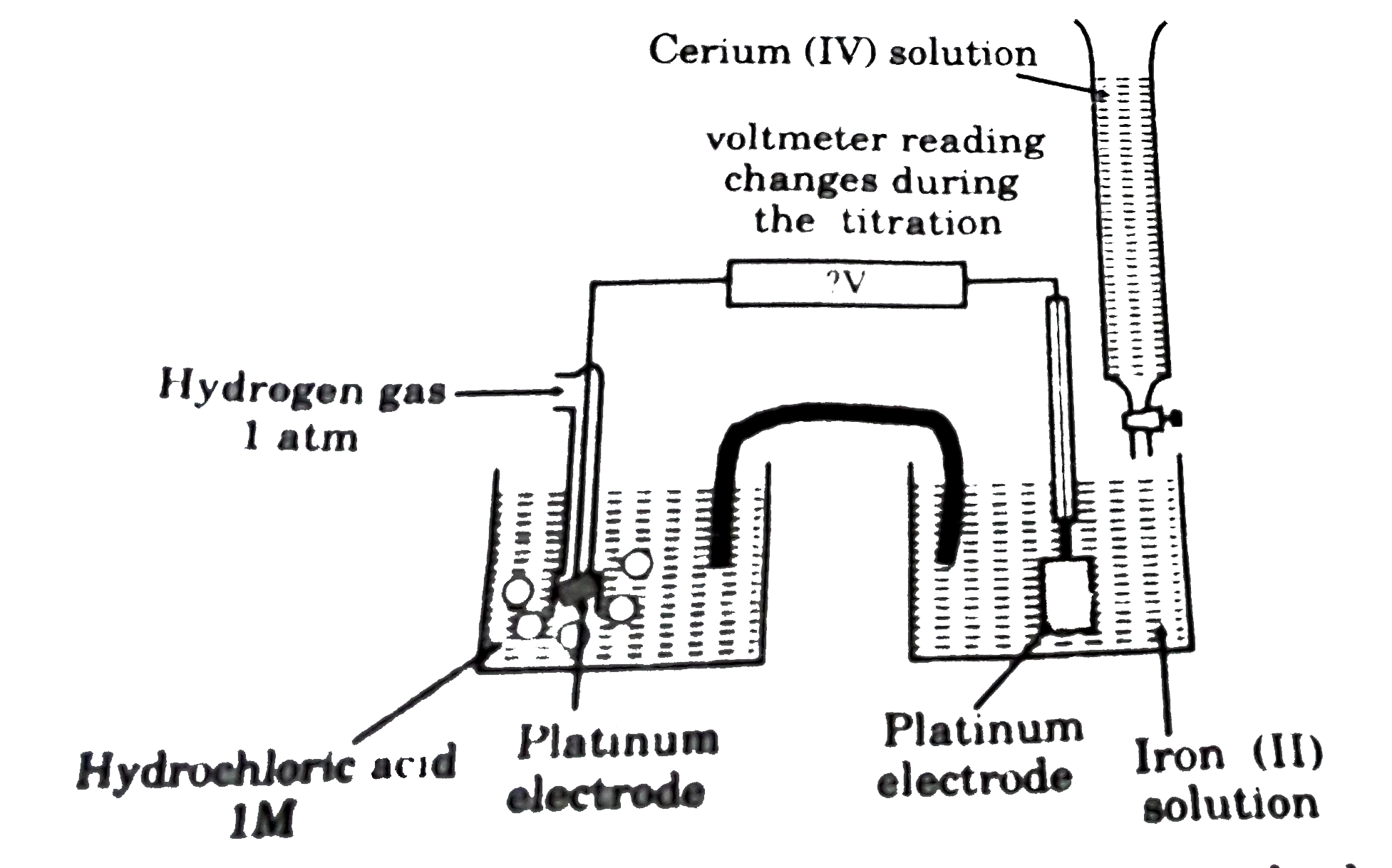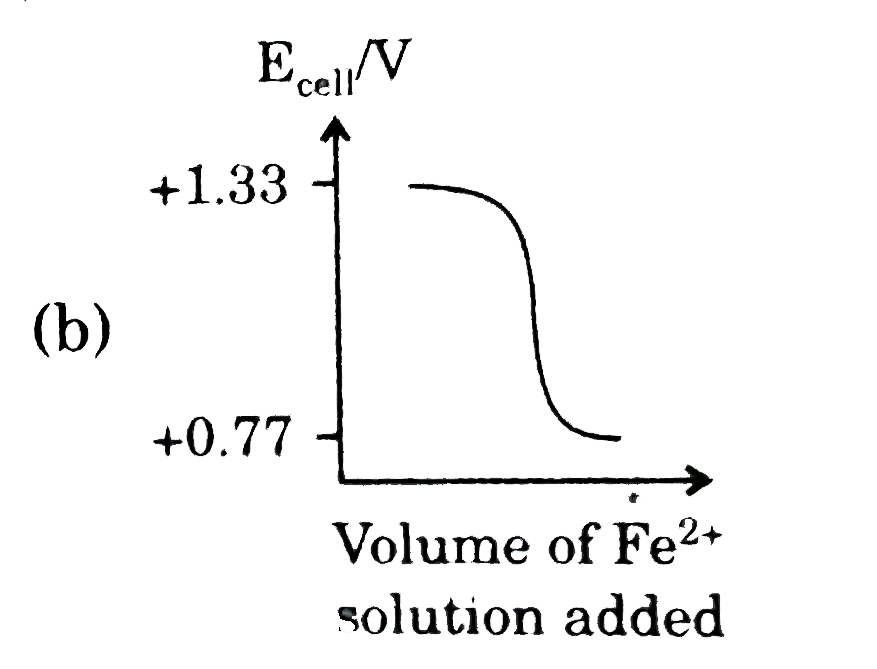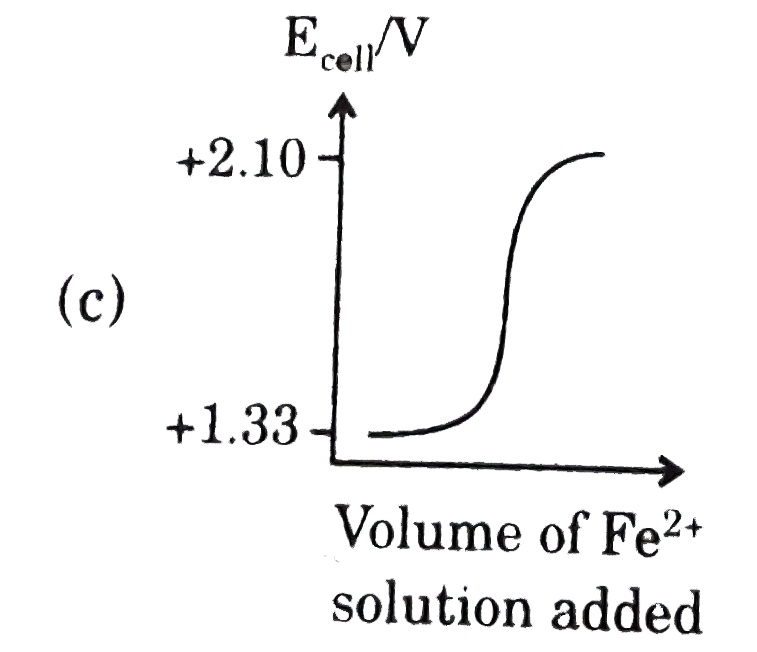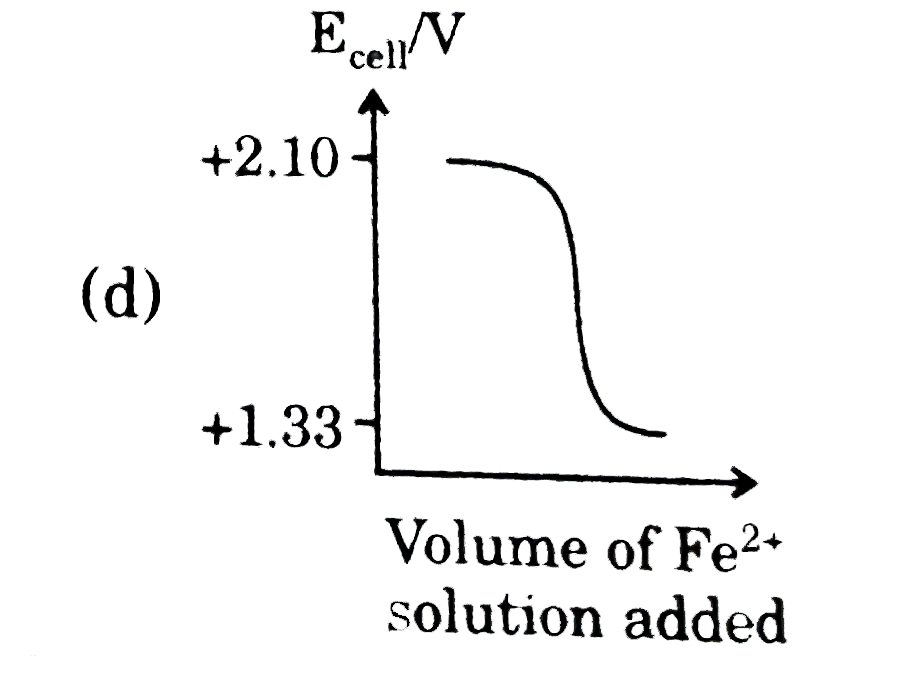Assertion: Chlorine is absorbed as Cl− ions. Its precise role is not well known. However, with Na+ and K+, it helps in determining solute concentration and anion-cation balance in cells.
Reason: Chlorine plays an important role in photosynthesis and takes place part in the water splitting reaction, thus releasing O2.
If both Assertion and Reason are true and the Reason is a correct explanation of the Assertion.
If both Assertion and Reason are true but Reason is not a correct explanation of the Assertion.
If Assertion is false but the Reason is true .
If Assertion is true but the Reason is false.
The correct Answer is:A
To analyze the given assertion and reason, we will break down the information step by step.
1. Understanding the Assertion:
- The assertion states that chlorine is absorbed as Cl− ions and that its precise role in plants is not well known. However, it mentions that alongside sodium (Na+) and potassium (K+), chlorine helps in determining solute concentration and maintaining anion-cation balance in cells.
- Conclusion: Chlorine is indeed absorbed as an ion and plays a role in ionic balance within plant cells.
2. Understanding the Reason:
- The reason provided states that chlorine plays an important role in photosynthesis and is involved in the water-splitting reaction, which releases oxygen (O2).
- Conclusion: Chlorine is essential in the process of photosynthesis, particularly in the splitting of water molecules, which is crucial for oxygen production.
3. Evaluating the Truth of Both Statements:
- Both the assertion and the reason are true. Chlorine is absorbed as an ion and contributes to ionic balance, while also playing a significant role in photosynthesis through the water-splitting reaction.
4. Determining the Relationship:
- The reason explains the assertion by providing insight into the role of chlorine in photosynthesis. Therefore, the reason is a correct explanation of the assertion.
5. Final Conclusion:
- Both the assertion and the reason are true, and the reason correctly explains the assertion.
Final Answer:
Both the assertion and the reason are true, and the reason is the correct explanation of the assertion.
---
- The assertion states that chlorine is absorbed as Cl− ions and that its precise role in plants is not well known. However, it mentions that alongside sodium (Na+) and potassium (K+), chlorine helps in determining solute concentration and maintaining anion-cation balance in cells.
- Conclusion: Chlorine is indeed absorbed as an ion and plays a role in ionic balance within plant cells.
- The reason provided states that chlorine plays an important role in photosynthesis and is involved in the water-splitting reaction, which releases oxygen (O2).
- Conclusion: Chlorine is essential in the process of photosynthesis, particularly in the splitting of water molecules, which is crucial for oxygen production.
- Both the assertion and the reason are true. Chlorine is absorbed as an ion and contributes to ionic balance, while also playing a significant role in photosynthesis through the water-splitting reaction.
- The reason explains the assertion by providing insight into the role of chlorine in photosynthesis. Therefore, the reason is a correct explanation of the assertion.
- Both the assertion and the reason are true, and the reason correctly explains the assertion.
Both the assertion and the reason are true, and the reason is the correct explanation of the assertion.
Topper's Solved these Questions
- BOOK - PRADEEPCHAPTER - RESPIRATION IN PLANTS EXERCISE - NOTABLE QUESTIONS4videos
RESPIRATION IN PLANTS
- BOOK - PRADEEPCHAPTER - RESPIRATION IN PLANTS EXERCISE - CURIOSITY QUESTIONS7videos
RESPIRATION IN PLANTS
- BOOK - PRADEEPCHAPTER - RESPIRATION IN PLANTS EXERCISE - PRACTICE QUESTIONS (MULTIPLE CHOICE QUESTIONS )81videos
RESPIRATION IN PLANTS
- BOOK - PRADEEPCHAPTER - RESPIRATION IN PLANTSEXERCISE - Practice Questions (II. Assertion-Reason Type Questions)12videos
RESPIRATION IN PLANTS
- BOOK - PRADEEPCHAPTER - STRUCTURAL ORGANIZATION IN ANIMALSEXERCISE - Practice Questions (Assertion-Reason Type Questions)6videos
STRUCTURAL ORGANIZATION IN ANIMALS
Similar Questions
Roles of some mineral elements in plants are given below. (a) Helps in anion cation balance in cells. (b) Involves in protein synthesis. (c) Helps in the formation of mitotic spindle (d) Involves in liberation of oxygen from water during photosynthesis. Which of the given role(s) is/are related to chlorine?
View SolutionCoordination compounds plays many important roles in animals and plants. The are essential in the storage and transport of oxygen as electrons transfer agents as catalysts and in photosynthesis Wide range of application in daily life takes place through formation of complexes Photographic fixing qualitative and quantitative analysis purification of water metallurgical extraction are some specific worth mentioning
Extraction of Ag from sulphide ore and removal of unreacted silver from photographic plate involve complexes:
(a) [Ag(S2O3)2]3− ion both
(b) [Ag(CN)2]Θ in both
(c) [Ag(S2O3)]3−,[Ag(CN)2]Θ
(d) [Ag(CN)2]Θ,[Ag_(2)(S_(2)O_(3))_(2)]^(3-) .View Solution
Knowledge Check
- Question 1 - Select One
Assertion (A) Chlorine is absorbed as Cl− ions . Its precise role is not well known . However with Na+andK+ , it help in determining solute concentration and anion - cation balance is clles.
Reason (R ) Chlorine plays an important role in photosynthesis and takes part in the water splitting reaction ,thus releasing O2.AIf both Assertion and Reason are true and Reason is correct explanation of Assertion.BIf both Assertion and Reason are true but Reason is not the correct explanation of Assertion.CIf Assertion is true but Reason is false.DIf both Assertion and Reason and false. - Question 2 - Select One
Titration are one of the methods we can use to discover the precise concentration of solutions. A typical titration involves adding a solution from a burette to another solution in a flask. The end point of the titration is found by watching a colour change taking place.However, a problem arises when a suitable indicator cannot be found, or when the colour change involved are unclear. In these cases, redox potential may sometimes come to the rescue.

A perticularly well known example (Fig.) is a method of discovering then concentration of iron (II) ions in a solution by titrating them with a solution of cerium (IV). The redox potential that are of interest here areE∘Fe3+∣Fe2+=0.77VandE∘Ce4+∣Ce3+=1.61V. These tell us that cerium (IV) ions are the oxidising agents. They should react according to the equation
Fe2+(aq)+Ce4+(aq)→Fe3+(aq)+Ce3+(aq).
Now imagine that we know the concentration of the cerium (IV) ions solution in the burette. We want to measure the concentration of the cerium (IV) solution from the burette, some of the iron (II) ions are will be oxidised. As a consequence the beaker would now contain large number of unreacted iron (II) ions , but also some iron (III) ions as well. All of the cerium (III). The solution in the beaker now represents an iron (III)/iron(II) half cell although not at standard conditions.Thus , the emf of the cell will be near, but not equal to E∘Fe3+∣Fe2+.

If we continue to add cerium (IV) solution , the number of iron (II) ions is gradually reduced and eventually only a very few are left (Table).At this stage the next few drops of cerium (IV) solution convert all the remaining irom (II) ions into iron (III), and some of the cerium (IV) ions are left unreacted. Once this happens we no longer have an iron (III)/iron(II) half-cell. Instead we have a solution in which there is a large number of cerium (III) ions and a smaller number of cerium (IV) ions. The solution in the beaker now behaves as a cerium (IV)/cerium(III)half-cell (although not a standard one.)
Just before all the iron (II) ions are converted into iron (III) we have a cell with an EMF of around +0.77V. After all the iron (II) ions are oxidised we have a cell with an emf of about +1.61V. This rapid rise in emf occurs with the addition of just one drop of cerium (IV) solution. You should be able to understand why a graph of cell emf against volume of cerium (IV) solution of the iron (II) solution calculated in the usual way.
Imagine you were given a solution of potassium dichromate (VI) in a beaker and a solution of iron (II) sulphate in a burette. You do not know the concentration of dichromate (VI) ions , but the concentration of the iron (II) solution is known. Your task it to carry out a redox titration using the two solutions in order to determine the concentration of dichromate (VI) ions. Sketch a graph showing how the emf changes in the course of the above titration.
ECr2O2−7/Cr3+=1.33V,EFe3+/Fe2+=0.77VA B
B C
C D
D
- Question 3 - Select One
The colloidal particles are electrically charged as a indicated by their migration towards cathode or anode under the applied electric field. In a particular colloidal system, all particles carry either positive charge or negative charge.
The electric charge on colloidal particles orginate in several ways. According to preferential adsorption theory, the freshly obtained precipitate particles adsorb ions from the dispersion medium, which are common to their lattice and acquire the charge of adsorbed ions. For example, For example, freshly obtained Fe(OH)3 precipitated is dispersed, by a little FeCl3, into colloidal solution owing to the adsorption of Fe3+ ions in preference. Thus sol particles will be positively charged.
In some cases the colloidal particles are aggregates of cations or anions having ampiphilic character. When the ions posses hydrophobic part (hydrocarbon end) as well as hydrophilic part (polar end group), they undergo association in aqueous solution to form particles having colloidal size. The formation of such particles, called micelles plays a very important role in the solubilization of water insoluble substances, (hydrocarbon, oils, fats, grease etc.). In micelles, the polar end groups are directed towards water and the hydrocarbon ends into the centre. The charge on sol particles of proteins depends on the pH. At low pH, the basic group of protein molecule is ionized (protonated) and at higher pH (alkaline medium), the acidic group is ionized. At isoelectric pH, characteristic to the protein, both basix and acidic groups are equally ionized. The stability of colloidal solution is attributed largely to the electric charge of the dispersed particles. This charge causes them to be coagulated or precipitated. On addition of small amount of electrolytes, the ions carrying oppiste charge are adsorbed by sol particles resulting in the neutralization of their charge. When the sol particles either with no charge or reduced charge, come closer due to Brownian movement, they coalesce to form bigger particles resulting in their separation from the dispersion medium. This is what is called coagulating or precipitation of the colloidal solution. The coagulating power of the effective ion, which depend on its charge, is expressed in terms of its coagulating value, defined as its minimum concentration (m mol/L) needed to precipitate a given sol.
Under the influence of an electric field, the particles in a sol migrate towards cathode. The coagulation of the same sol is studied using NaCl, Na2SO4 and Na3PO4 solutions. Their coagulating values will be in the order :ANaCl>Na2SO4>Na3PO4BNa2SO4>Na3PO4>NaClCNa3PO4>Na2SO4>NaClDNa2SO4>NaCl>Na3PO4
The colloidal particles are electrically charged as a indicated by their migration towards cathode or anode under the applied electric field. In a particular colloidal system, all particles carry either positive charge or negative charge.
The electric charge on colloidal particles orginate in several ways. According to preferential adsorption theory, the freshly obtained precipitate particles adsorb ions from the dispersion medium, which are common to their lattice and acquire the charge of adsorbed ions. For example, For example, freshly obtained Fe(OH)3 precipitated is dispersed, by a little FeCl3, into colloidal solution owing to the adsorption of Fe3+ ions in preference. Thus sol particles will be positively charged.
In some cases the colloidal particles are aggregates of cations or anions having ampiphilic character. When the ions posses hydrophobic part (hydrocarbon end) as well as hydrophilic part (polar end group), they undergo association in aqueous solution to form particles having colloidal size. The formation of such particles, called micelles plays a very important role in the solubilization of water insoluble substances, (hydrocarbon, oils, fats, grease etc.). In micelles, the polar end groups are directed towards water and the hydrocarbon ends into the centre. The charge on sol particles of proteins depends on the pH. At low pH, the basic group of protein molecule is ionized (protonated) and at higher pH (alkaline medium), the acidic group is ionized. At isoelectric pH, characteristic to the protein, both basix and acidic groups are equally ionized. The stability of colloidal solution is attributed largely to the electric charge of the dispersed particles. This charge causes them to be coagulated or precipitated. On addition of small amount of electrolytes, the ions carrying oppiste charge are adsorbed by sol particles resulting in the neutralization of their charge. When the sol particles either with no charge or reduced charge, come closer due to Brownian movement, they coalesce to form bigger particles resulting in their separation from the dispersion medium. This is what is called coagulating or precipitation of the colloidal solution. The coagulating power of the effective ion, which depend on its charge, is expressed in terms of its coagulating value, defined as its minimum concentration (m mol/L) needed to precipitate a given sol.
When 9.0 ml of arsenious sulphide sol and 1.0 ml of 1.0×10−4MBaCl2 are mixed, turbidity due to precipitation just appears after 2 hours. The effective ion and its coagulating value are respectively :View SolutionThe colloidal particles are electrically charged as a indicated by their migration towards cathode or anode under the applied electric field. In a particular colloidal system, all particles carry either positive charge or negative charge.
The electric charge on colloidal particles orginate in several ways. According to preferential adsorption theory, the freshly obtained precipitate particles adsorb ions from the dispersion medium, which are common to their lattice and acquire the charge of adsorbed ions. For example, For example, freshly obtained Fe(OH)3 precipitated is dispersed, by a little FeCl3, into colloidal solution owing to the adsorption of Fe3+ ions in preference. Thus sol particles will be positively charged.
In some cases the colloidal particles are aggregates of cations or anions having ampiphilic character. When the ions posses hydrophobic part (hydrocarbon end) as well as hydrophilic part (polar end group), they undergo association in aqueous solution to form particles having colloidal size. The formation of such particles, called micelles plays a very important role in the solubilization of water insoluble substances, (hydrocarbon, oils, fats, grease etc.). In micelles, the polar end groups are directed towards water and the hydrocarbon ends into the centre. The charge on sol particles of proteins depends on the pH. At low pH, the basic group of protein molecule is ionized (protonated) and at higher pH (alkaline medium), the acidic group is ionized. At isoelectric pH, characteristic to the protein, both basix and acidic groups are equally ionized. The stability of colloidal solution is attributed largely to the electric charge of the dispersed particles. This charge causes them to be coagulated or precipitated. On addition of small amount of electrolytes, the ions carrying oppiste charge are adsorbed by sol particles resulting in the neutralization of their charge. When the sol particles either with no charge or reduced charge, come closer due to Brownian movement, they coalesce to form bigger particles resulting in their separation from the dispersion medium. This is what is called coagulating or precipitation of the colloidal solution. The coagulating power of the effective ion, which depend on its charge, is expressed in terms of its coagulating value, defined as its minimum concentration (m mol/L) needed to precipitate a given sol.
Which of the following ions would have the minimum coagulating value for sol obtained on peptizing Sn(OH)4 by little NaOH solution?View SolutionThe colloidal particles are electrically charged as a indicated by their migration towards cathode or anode under the applied electric field. In a particular colloidal system, all particles carry either positive charge or negative charge.
The electric charge on colloidal particles orginate in several ways. According to preferential adsorption theory, the freshly obtained precipitate particles adsorb ions from the dispersion medium, which are common to their lattice and acquire the charge of adsorbed ions. For example, For example, freshly obtained Fe(OH)3 precipitated is dispersed, by a little FeCl3, into colloidal solution owing to the adsorption of Fe3+ ions in preference. Thus sol particles will be positively charged.
In some cases the colloidal particles are aggregates of cations or anions having ampiphilic character. When the ions posses hydrophobic part (hydrocarbon end) as well as hydrophilic part (polar end group), they undergo association in aqueous solution to form particles having colloidal size. The formation of such particles, called micelles plays a very important role in the solubilization of water insoluble substances, (hydrocarbon, oils, fats, grease etc.). In micelles, the polar end groups are directed towards water and the hydrocarbon ends into the centre. The charge on sol particles of proteins depends on the pH. At low pH, the basic group of protein molecule is ionized (protonated) and at higher pH (alkaline medium), the acidic group is ionized. At isoelectric pH, characteristic to the protein, both basix and acidic groups are equally ionized. The stability of colloidal solution is attributed largely to the electric charge of the dispersed particles. This charge causes them to be coagulated or precipitated. On addition of small amount of electrolytes, the ions carrying oppiste charge are adsorbed by sol particles resulting in the neutralization of their charge. When the sol particles either with no charge or reduced charge, come closer due to Brownian movement, they coalesce to form bigger particles resulting in their separation from the dispersion medium. This is what is called coagulating or precipitation of the colloidal solution. The coagulating power of the effective ion, which depend on its charge, is expressed in terms of its coagulating value, defined as its minimum concentration (m mol/L) needed to precipitate a given sol.
A gelatin sol at pH less than the isoelectric value is subjected to an electric field. The sol particles migrate toward :View SolutionThe colloidal particles are electrically charged as a indicated by their migration towards cathode or anode under the applied electric field. In a particular colloidal system, all particles carry either positive charge or negative charge.
The electric charge on colloidal particles orginate in several ways. According to preferential adsorption theory, the freshly obtained precipitate particles adsorb ions from the dispersion medium, which are common to their lattice and acquire the charge of adsorbed ions. For example, For example, freshly obtained Fe(OH)3 precipitated is dispersed, by a little FeCl3, into colloidal solution owing to the adsorption of Fe3+ ions in preference. Thus sol particles will be positively charged.
In some cases the colloidal particles are aggregates of cations or anions having ampiphilic character. When the ions posses hydrophobic part (hydrocarbon end) as well as hydrophilic part (polar end group), they undergo association in aqueous solution to form particles having colloidal size. The formation of such particles, called micelles plays a very important role in the solubilization of water insoluble substances, (hydrocarbon, oils, fats, grease etc.). In micelles, the polar end groups are directed towards water and the hydrocarbon ends into the centre. The charge on sol particles of proteins depends on the pH. At low pH, the basic group of protein molecule is ionized (protonated) and at higher pH (alkaline medium), the acidic group is ionized. At isoelectric pH, characteristic to the protein, both basix and acidic groups are equally ionized. The stability of colloidal solution is attributed largely to the electric charge of the dispersed particles. This charge causes them to be coagulated or precipitated. On addition of small amount of electrolytes, the ions carrying oppiste charge are adsorbed by sol particles resulting in the neutralization of their charge. When the sol particles either with no charge or reduced charge, come closer due to Brownian movement, they coalesce to form bigger particles resulting in their separation from the dispersion medium. This is what is called coagulating or precipitation of the colloidal solution. The coagulating power of the effective ion, which depend on its charge, is expressed in terms of its coagulating value, defined as its minimum concentration (m mol/L) needed to precipitate a given sol.
100 ml each of two sols of AgI, one obtained by adding AgNO3 to slight excess of KI and another obtained by adding KI to slight excess of AgNO3, are mixed together. Then :View SolutionThe colloidal particles are electrically charged as a indicated by their migration towards cathode or anode under the applied electric field. In a particular colloidal system, all particles carry either positive charge or negative charge.
The electric charge on colloidal particles orginate in several ways. According to preferential adsorption theory, the freshly obtained precipitate particles adsorb ions from the dispersion medium, which are common to their lattice and acquire the charge of adsorbed ions. For example, For example, freshly obtained Fe(OH)3 precipitated is dispersed, by a little FeCl3, into colloidal solution owing to the adsorption of Fe3+ ions in preference. Thus sol particles will be positively charged.
In some cases the colloidal particles are aggregates of cations or anions having ampiphilic character. When the ions posses hydrophobic part (hydrocarbon end) as well as hydrophilic part (polar end group), they undergo association in aqueous solution to form particles having colloidal size. The formation of such particles, called micelles plays a very important role in the solubilization of water insoluble substances, (hydrocarbon, oils, fats, grease etc.). In micelles, the polar end groups are directed towards water and the hydrocarbon ends into the centre. The charge on sol particles of proteins depends on the pH. At low pH, the basic group of protein molecule is ionized (protonated) and at higher pH (alkaline medium), the acidic group is ionized. At isoelectric pH, characteristic to the protein, both basix and acidic groups are equally ionized. The stability of colloidal solution is attributed largely to the electric charge of the dispersed particles. This charge causes them to be coagulated or precipitated. On addition of small amount of electrolytes, the ions carrying oppiste charge are adsorbed by sol particles resulting in the neutralization of their charge. When the sol particles either with no charge or reduced charge, come closer due to Brownian movement, they coalesce to form bigger particles resulting in their separation from the dispersion medium. This is what is called coagulating or precipitation of the colloidal solution. The coagulating power of the effective ion, which depend on its charge, is expressed in terms of its coagulating value, defined as its minimum concentration (m mol/L) needed to precipitate a given sol.
How would you obtain a sol of AgI, the particles of which migrate towards cathode under the electric field?View Solution

